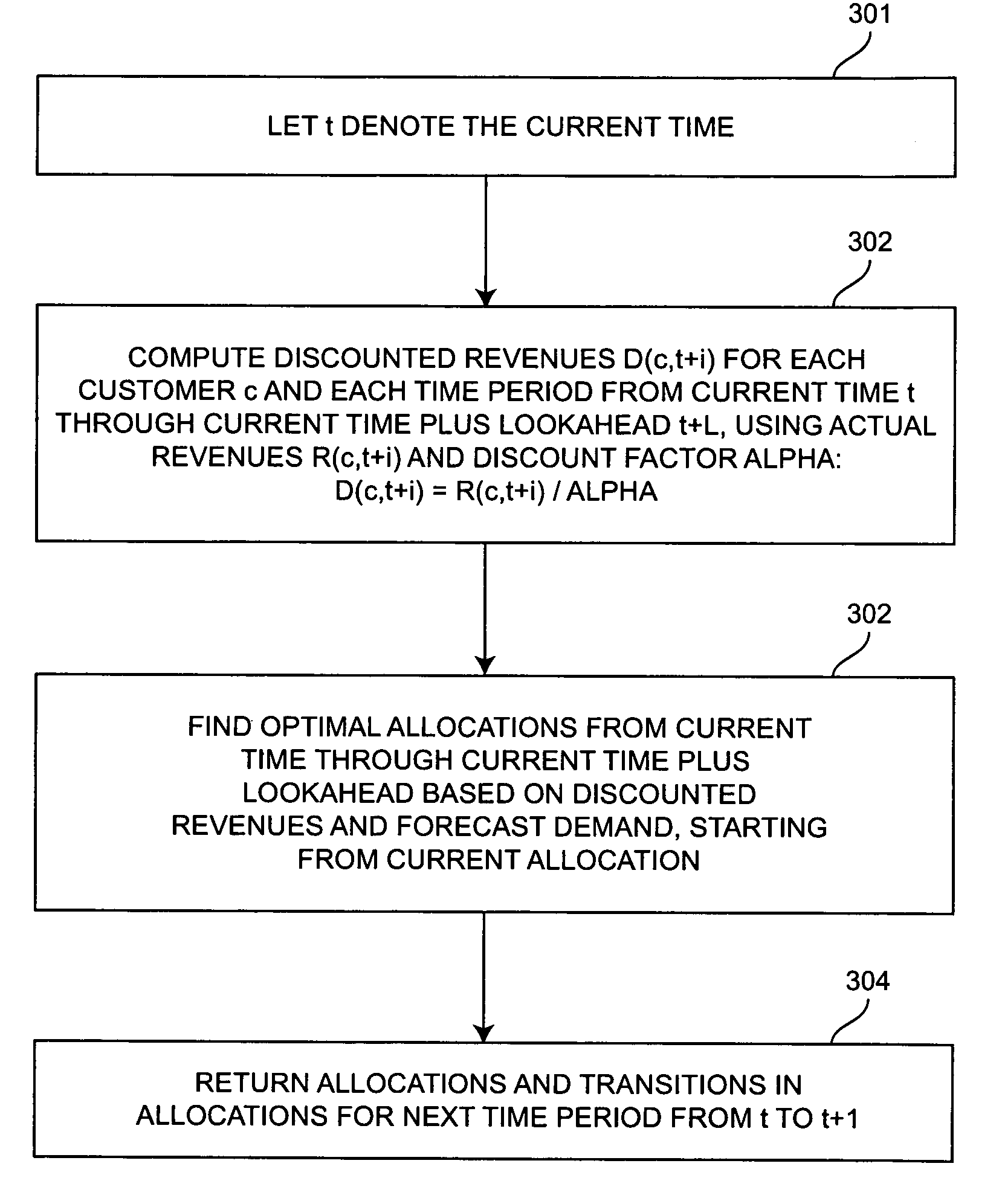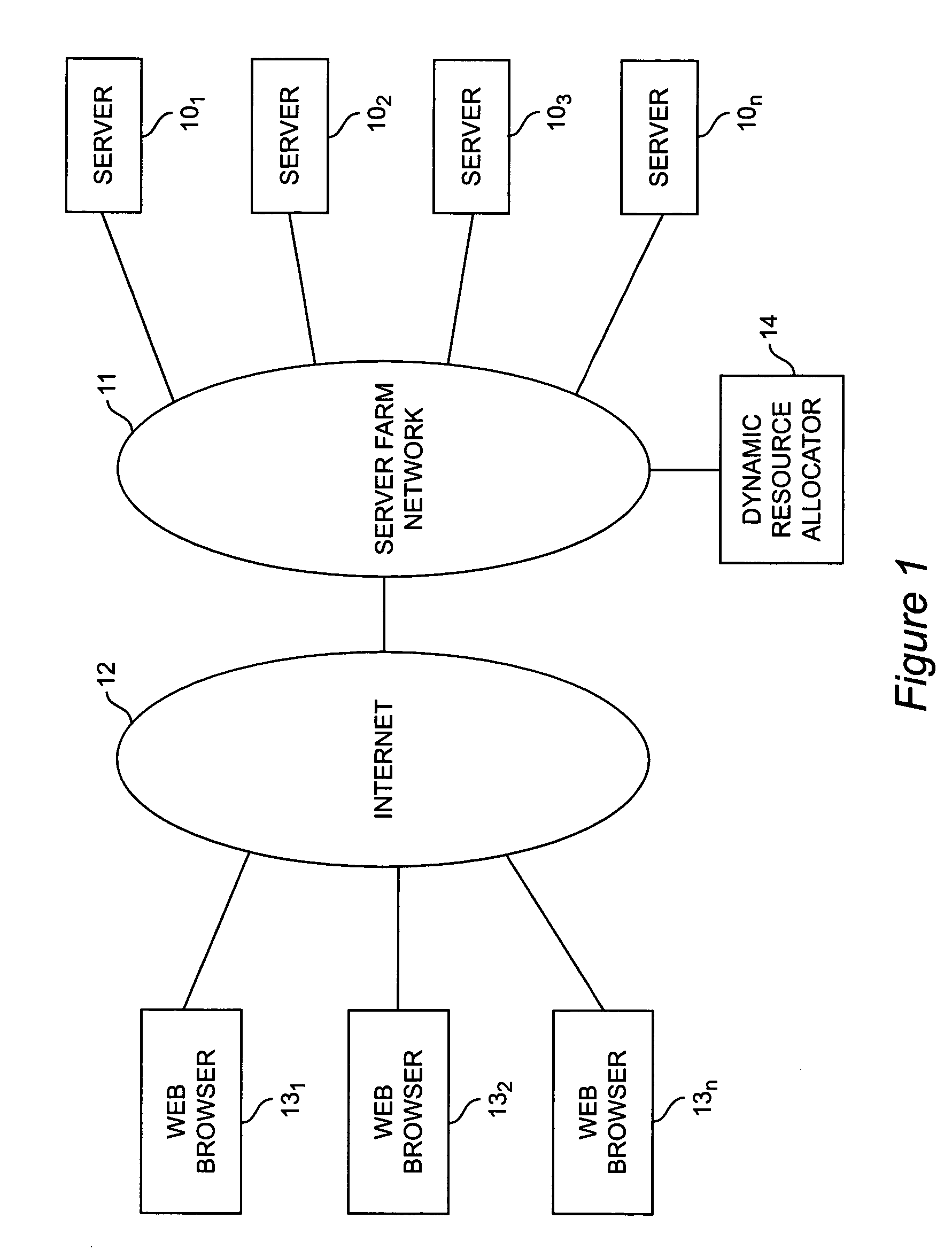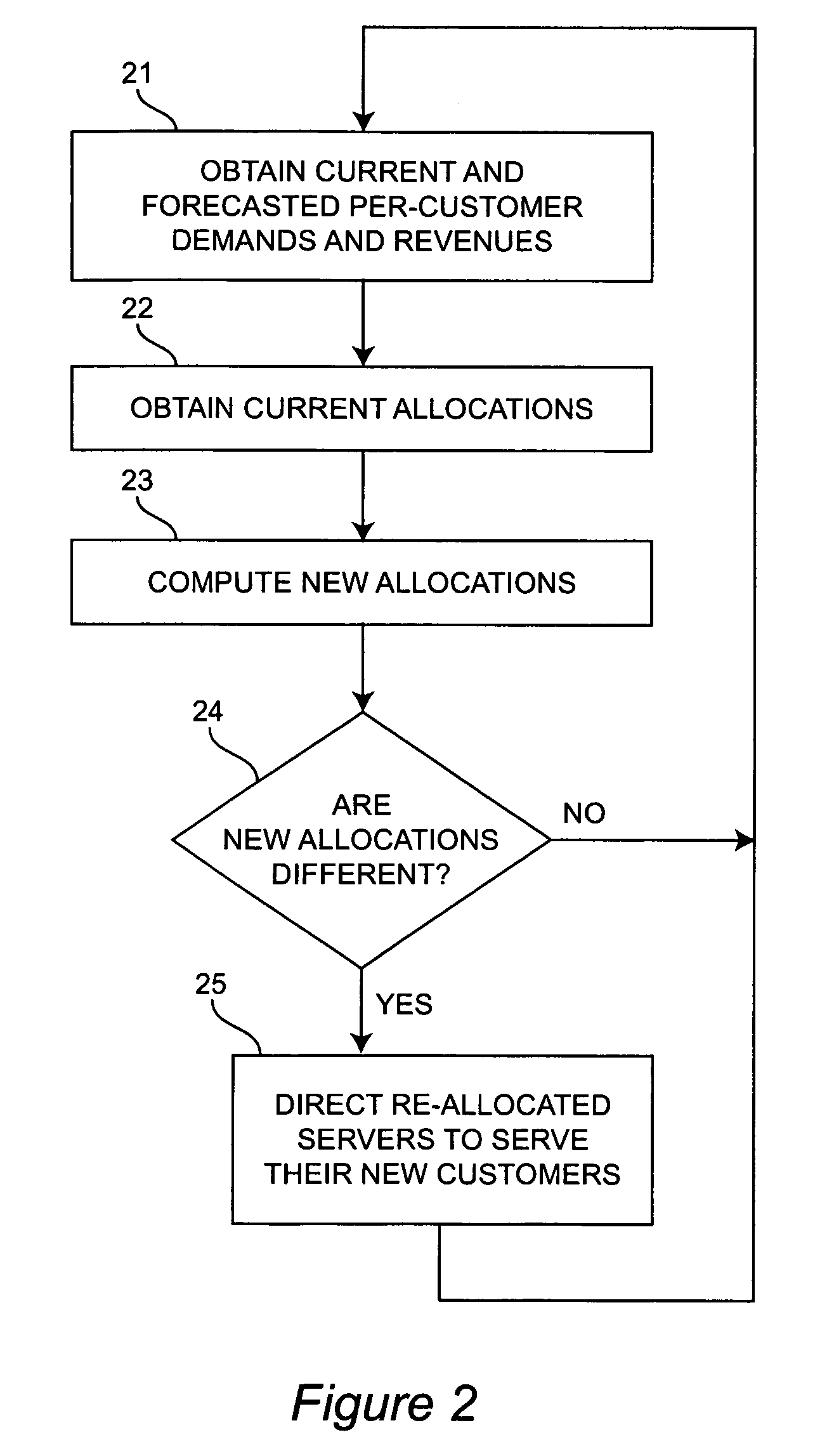Dynamic resource allocation using projected future benefits
a resource allocation and projected future benefit technology, applied in the field of benefit task systems, can solve problems such as system overflow, request loss, requests may be left unserved, etc., and achieve the effect of improving the quality of the solution and maximizing the benefit gained
- Summary
- Abstract
- Description
- Claims
- Application Information
AI Technical Summary
Benefits of technology
Problems solved by technology
Method used
Image
Examples
Embodiment Construction
[0021]Although the invention is described in terms of a specific application to a Web server farm, this explanation is by way of example only. It will be understood by those skilled in the art that the invention may be applied to other applications. Among those applications are the customer telephone support problem and the allocation of computers to computationally intensive problems already mentioned. The Web server farm problem will serve to provide a concrete application of the invention which can be applied to other resource allocation problems.
[0022]Referring now to the drawings, and more particularly to FIG. 1, there is shown, in generalized form, the architecture of a Web server farm of the type managed and maintained by a Web hosting service provider. The farm itself comprises a plurality of servers 101, 102, 103, . . . , 10n connected to a server farm network 11. The server farm network 11 connects the servers via the Internet 12 to a plurality of Web browsers 131, 132, . ...
PUM
 Login to View More
Login to View More Abstract
Description
Claims
Application Information
 Login to View More
Login to View More - R&D
- Intellectual Property
- Life Sciences
- Materials
- Tech Scout
- Unparalleled Data Quality
- Higher Quality Content
- 60% Fewer Hallucinations
Browse by: Latest US Patents, China's latest patents, Technical Efficacy Thesaurus, Application Domain, Technology Topic, Popular Technical Reports.
© 2025 PatSnap. All rights reserved.Legal|Privacy policy|Modern Slavery Act Transparency Statement|Sitemap|About US| Contact US: help@patsnap.com



